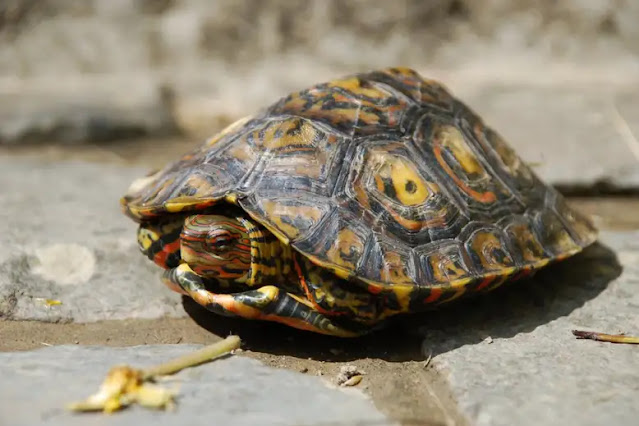New recordings of reptile, amphibian, and fish sounds indicate that vocal communication has a common evolutionary origin in vertebrates.
 |
| Ornate or painted wood turtle juvenile (Rhinoclemmys pulcherrima), a species now known to be vocal Jorgewich-Cohen and colleagues |
Vocal communication is far more common in vertebrate animals than previously thought.
Gabriel Jorgewich-Cohen of the University of Zurich in Switzerland and his colleagues recorded 53 previously thought-to-be non-vocal species, including the tuatara (Sphenodon punctatus), the Cayenne caecilian (Typhlonectes compressicauda), the South American lungfish (Lepidosiren paradoxa), and 50 turtle species.
Rather than developing independently in many animals, the study suggests that vocal communication evolved in a common ancestor more than 400 million years ago.
Many lung-equipped vertebrates, known as choanate vertebrates, produce sounds by pushing air up through their lungs via structures in their throats. They use these sounds in social interactions such as parental care, mate selection, territory marking, and other vocal communication-enhanced behaviors.
According to Jorgewich-Cohen, researchers have overlooked at least 100 choanates in vocal communication studies. That's because, while they were occasionally heard making sounds, it was assumed that these noises were either accidental or intended to defend themselves from other species, and thus couldn't be considered true vocal communication.
According to Jorgewich-Cohen, people frequently mistake turtles for being non-vocal. He was inspired to investigate further after taking part in a field study on turtle vocal communication, beginning with his own pet turtles. "I decided to record them just to see what it was like," he says. "I discovered a few sounds there, and we just kept going [with more species]." And all of a sudden, I had good sampling and could see the big picture."
The acoustic abilities of the 53 species studied ranged from chirps and click to more advanced, complex sounds of different tones. According to Jorgewich-Cohen, many researchers agree that when animals use their respiratory tracts to create complex repertoires of different sounds or harmonic calls, they are communicating with one another.
He also used underwater cameras to record sound and investigate what behaviors might be associated with the noises. Males used the most obvious forms of communication when courting females or fighting with other males.
Jorgewich-Cohen and his colleagues determined that acoustic communication evolved in nose-breathing vertebrates around 407 million years ago by combining their findings with data collected previously on 1800 additional species of choanates. This means that vocal communication predates the lobe-finned fish Eoactinistia foreyi, which is thought to be the last common ancestor of all choanate vertebrates.
According to Jorgewich-Cohen, vocal communication may be even older than that. Lungless fish make vocal sounds as well, and it is possible that they evolved this trait and passed it on to subsequent generations that developed lungs. "It's possible that one of those fishes' lineages was the forerunner of the type of sound that we make as [choanates]," he says. "So it's possible that this lineage of sound production is older than what I discovered."
Gerald Kuchling of the University of Western Australia finds it intriguing that turtle vocalizations have gone unnoticed for so long. "I'm not surprised that they all seem to vocalize," he says. "I believe it is significant that incorporating this discovery into a phylogeny [evolutionary tree] reveals this as an old, fundamental common trait of choanates in general."
Nature Communications, DOI: 10.1038/s41467-022-33741-8
